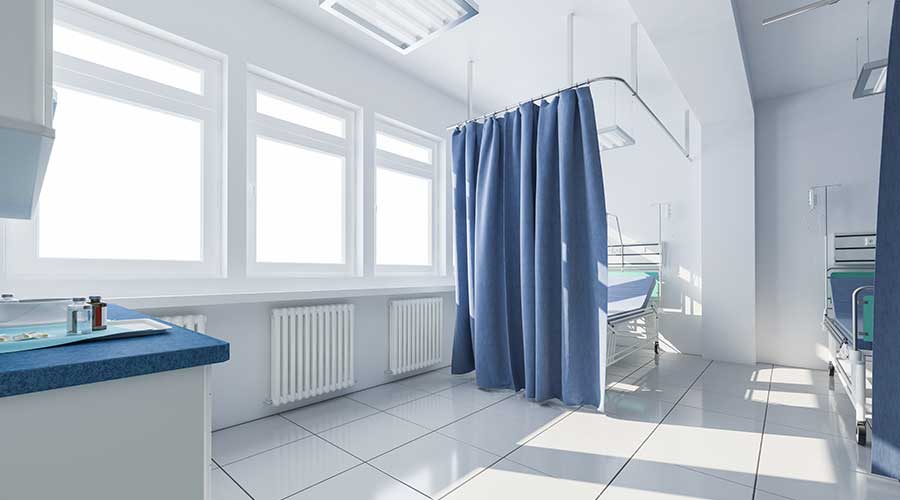Editor’s note: This is the second part of a three-part series. To read part one, please click here.
An article by the Sunlight Institute states that ancient doctors and natural healers relied on sunlight to help heal wounds, treat lung infections, and bone diseases like rickets. This ancient practice is likely still relevant today. A growing body of research reiterates the importance of daylight. It can be an extremely effective measure in the healing process.
Principal/Partner at Margulies Perruzzi, Jason B. Costello, AIA, LEED AP, says the role of daylight has been shown to lower the overall length of stay of most patients in healthcare facilities. It also improves mental well-being.
“It is interesting that daylighting impacts circadian rhythms, but access to views of nature has been shown to amplify the positive effects on patient pain levels and length of stay,” says Costello.
For facilities interested in harnessing the power of natural light — but without the ability to build new, larger windows — what might some options be?
“Existing facilities can introduce glazing into the interior of the building to help bring natural light further into the middle of the building,” Costello says. “This is often most effective in corridor walls that can either be clear or frosted glass depending on the exterior room’s use and the need for patient/staff privacy.”
Still, sometimes it’s not possible or financially feasible for a facility to undergo expensive renovations.
“When the design cannot accommodate new windows or borrowed lights, we use large format artwork incorporated into the wall protection to views to local landscapes to bring nature into the building without the added risks from infection control with natural plantings,” Costello says. “This can be combined with artificial light that is programmable to mimic the diurnal cycle by adjusting light levels throughout the day.”
Likewise, interior vision panels can also be used to incorporate natural elements. Seagrass, reeds, or organic patterns reflecting nature are all good choices.
Additional benefits of natural light
Not only do these additions help patients to feel more relaxed — which can promote healing —but it has another positive side effect as well.
“This holistic approach has been shown to benefit shift workers in the healthcare environment,” Costello says.
In fact, there is generally a reduction in errors when staff is exposed to higher light levels while performing clinical tasks even if the light was not from a natural source. Increasing light in healthcare facilities is a win-win situation for everyone.
Newly built facilities have more freedom and flexibility when it comes to incorporating natural light into buildings. But while light is a wonderful thing, too much of it especially from southern-facing windows can cause excessive heating of the building. It can also cause a disruptive glare, Costello says. Utilizing eastern and western-facing windows can be helpful, but there are other solutions if southern-facing windows are the only option.
Costello recommends that facilities look for opportunities to extend the circulation of light to the perimeter of the building as well. This frequently offers staff direct access to daylight in areas like breakrooms and lounges. These are rooms that are typically daylight deprived. Using interior glass windows also helps extend natural light further into the building.
Joy Choquette is a Vermont-based freelance writer.

 How Efficiency Checklists Help Hospitals Save Energy, Water and Money
How Efficiency Checklists Help Hospitals Save Energy, Water and Money Designing with Heart: Seen Health Center Blends Cultural Warmth and Clinical Care
Designing with Heart: Seen Health Center Blends Cultural Warmth and Clinical Care Rutgers Health and University Hospital Breaks Ground on Campus Expansion
Rutgers Health and University Hospital Breaks Ground on Campus Expansion What to Consider When Modernizing Healthcare Facilities
What to Consider When Modernizing Healthcare Facilities Corewell Health Beaumont Troy Hospital to Build New Tower
Corewell Health Beaumont Troy Hospital to Build New Tower